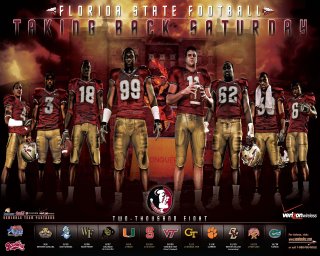

Testudo the Maryland mascot is a Diamondback turtle. Like some other famous personages born into the Depression of the 1930s, the derivation of his name is cloudy. But it is likely that his moniker is derived from the scientific classification for turtle (testudines). Or the name could have come from a dictionary definition that says the word, testudo, was derived from the Latin and meant a shelter held over the head of Roman soldiers -- like a tortoise shell.
When Testudo had his coming out on May 23, 1933, he was thrown into a world filled with intimidating mascots -- Wildcats, Tigers, Devils, Wolves, Bears -- thought up over a half-century of intercollegiate competition. Maryland College Park was consolidated from different state schools in 1920 to form the base of today's wide-ranging state system, and the remodeled Maryland needed a flag carrier to do battle with Wahoos, Lions and Generals.
Dr. H.C. Byrd, a football coach who later became University President, recommended the Diamondback as mascot in 1932 in response to the student newspaper's search for an "official" leader. Byrd's childhood in Crisfield, Md., apparently included skirmishes with this brand of snapping turtle, indigenous to the Bay. The school paper was in fact already called The Diamondback, and when the Class of 1933 stepped forward with the idea of giving the University a permanent bronzed version as its graduation gift, Testudo's family was in to stay.
Maryland had been referring to itself as Old Liners, yet another name whose derivation of which no one seems sure. Historians are in a scrimmage over whether the nickname is a reference to a Revolutionary War Troop of Maryland soldiers who distinguished themselves on the field of battle, or they feel it could refer to a squabble with Pennsylvanians over just where the border between the two states should be.
The Class of '33 raised money for casting a Diamondback by holding its Senior Prom on campus to save money on expenses. And the yearbook and Student Government Association chipped-in. Edwin C. Mayo, Class of '04 and a former quarterback, donated at cost the 300 pound bronzed beauty as President of Gorham Manufacturing in Providence, R.I. Robert J. Hill cast the inspired sculpture accomplished by company artist Aristide Cianfrani. Further turtleization came when the student yearbook, The Reveille, became The Terrapin in 1935. Newspapers, even then exploring every angle, shortened Terrapin to Terp for headline writing ease when it wasn't trying to cram Old Liner into a single column head. The name was in place; now came the stuff of legend.
On May 23, 1933, Testudo was unveiled to the world. The live terrapin used as a model had a ribbon attached to it, which was in turn attached to the canvas covering the sculpture. And as the smaller terrapin struggled forward, Testudo was revealed for the first time.
At first, Testudo had his perch in front of Ritchie Coliseum. Unfortunately, this relatively open spot soon became the scene of multiple crimes against the unguarded mascot, including painting, defacing the pedestal, and kidnapping. In 1947, when Testudo was captured by Johns Hopkins students, many Maryland students rushed to Baltimore and laid siege the building where the mascot was held. Even though 200 police were called to control the riot, the "siege" quickly turned into a party.
In 1983, the then fifty year old Testudo was rededicated and restored to his former glory by the Class of 1933. He finally received help in his watch over campus in 1992, when a bronze twin to Testudo was created and placed outside the Football Complex locker room.
A costumed version of Testudo began making his rounds beginning in the 1970s.
Twitter Updates
Thursday, November 15, 2007
Does A Turtle Put Fear In The Hearts Of Its Opponents?
Posted by
tallynolefan
at
9:26 PM
![]()
Subscribe to:
Post Comments (Atom)





No comments:
Post a Comment